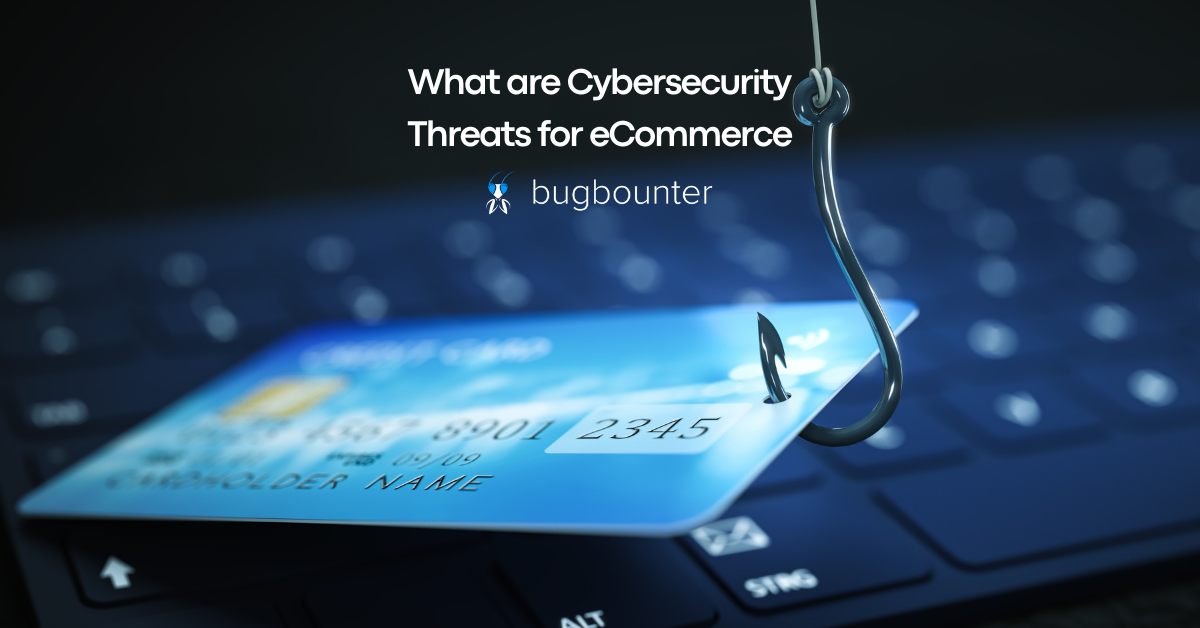What are Cybersecurity Threats for eCommerce
In the rapidly evolving landscape of eCommerce, the surge in online activities has brought both opportunities and challenges. With global eCommerce sales projected to reach $8.1 trillion by 2026, the sector is a prime target for cyber threats. In this article, we will delve into the key cybersecurity threats faced by eCommerce businesses in 2023.
The eCommerce Threat Landscape
We have listed the top 7 cybersecurity risks answering the question “What are Cybersecurity Threats for eCommerce?” See them below.

1. Financial Fraud in eCommerce: One of the Most Important Ones
eCommerce faces a relentless surge in financial fraud, reaching unprecedented levels globally. As highlighted by recent statistics, the landscape witnessed a staggering $41 million in losses due to online payment fraud in 2022, with projections indicating an alarming increase to over $48 billion by the end of 2023.
Europe, notably Germany and France, grapples with significant eCommerce fraud risks, with the region accounting for 26% of global eCommerce fraud. In North America, the epicenter of fraudulent transaction value, eCommerce fraud comprises a substantial 42%, emphasizing the urgent need for robust fraud prevention measures in the evolving digital marketplace.

2. Phishing: A Common but Grand Risk
Phishing attacks, often involving gift or discount coupons, remain a significant threat. Hackers leverage seemingly authentic messages and emails to defraud eCommerce customers. Vigilance is crucial as attackers impersonate reputable companies like PayPal and Google.

3. Botnet Intrusions: Competing with Malicious Automation
The rise of bot attacks, especially orchestrated by rival companies, poses a unique challenge. Competitors may deploy specialized bots to gather information on inventory and prices, manipulating them to gain a competitive edge. eCommerce sites must contend with automated tactics that artificially deplete inventory and hinder genuine customer purchases.
As the influence of artificial intelligence continues to permeate diverse industries, the concomitant surge in AI-based threats has become increasingly pronounced. Delve into the dynamic landscape of cyber threats induced by AI in our previous blog.

4. Spamming: Compromising Security and Performance
Infected links distributed via email or social media pose a dual threat by compromising security and slowing down website performance. eCommerce businesses must address the risk of malware spread through spamming, as it can have severe consequences for both security and user experience.

5. DoS and DDoS Attacks: Disrupting Operations
Denial-of-service (DoS) and distributed denial-of-service (DDoS) attacks continue to plague eCommerce. These attacks flood servers, leading to website shutdowns and overall sales shortages. With the prevalence of untraceable IP addresses, businesses often find themselves grappling with the aftermath of relentless cyber assaults.

6. Spyware and Adware: Hidden Threats
Spyware, capable of monitoring user activities without their knowledge, and adware, which automatically displays ads, are both prevalent in the eCommerce realm. While some adware may seem benign, the combination with spyware amplifies the risks, compromising user privacy and data security.

7. Man-in-the-Middle Attacks: Exploiting Communication Gaps
Hackers discreetly intervening in communication between parties, known as Man-in-the-Middle attacks, pose a continued risk. Increased business mobility, widespread use of open Wi-Fi, and the proliferation of insecure IoT devices contribute to the vulnerability of eCommerce companies to such attacks.
Emerging eCommerce Security Threats
Explore emerging threats to eCommerce, from ransomware encrypting data to supply chain vulnerabilities and the dangers of credential stuffing. Stay vigilant and prepared in the ever-changing cybersecurity landscape.

Ransomware
Ransomware attacks encrypt a company’s data, rendering it inaccessible until a ransom is paid. eCommerce businesses, with their vast customer databases, are lucrative targets for ransomware attacks that can disrupt operations and compromise sensitive information.

Supply Chain Risks
eCommerce relies heavily on complex supply chains. Cybercriminals may exploit vulnerabilities in the supply chain, compromising the integrity of products or gaining unauthorized access to sensitive information during transit.

Credential Stuffing
With the prevalence of users reusing passwords across multiple platforms, cybercriminals employ credential stuffing attacks. Hackers use stolen credentials from one site to gain unauthorized access to eCommerce accounts, potentially leading to financial loss and reputational damage.
Mitigating Cyber Risks for eCommerce Companies
After dissecting the potential threats, safeguarding your eCommerce venture requires proactive measures. Here are actionable steps to enhance cybersecurity:

1. Conduct Regular Security Audits
Evaluate your commerce infrastructure annually to identify strengths and weaknesses. Engage cybersecurity experts with industry-specific knowledge to tailor strategies addressing unique eCommerce security threats.

2. Role-Based Access Control
Evaluate your commerce infrastructure annually to identify strengths and weaknesses. Engage cybersecurity experts with industry-specific knowledge to tailor strategies addressing unique eCommerce security threats.

3. AI and ML for Monitoring
Employ artificial intelligence (AI) and machine learning (ML) to automate the analysis of traffic and data related to your IT infrastructure. These technologies enable real-time threat identification, allowing swift responses to potential risks.

4. Prioritize Data Backups
Back up critical data regularly, with cloud storage emerging as a flexible and cost-effective solution. Quick data restoration capabilities are essential in the event of loss or cyber-attacks.
Bug Bounty Programs for Your eCommerce Company’s Defense
As eCommerce cyber threats evolve, bug bounty platforms provide a robust solution. Harnessing the power of cybersecurity experts, bug bounty programs helps identify vulnerabilities before malicious actors exploit them. Launching a bug bounty empowers your business to stay ahead of cyber threats, ensuring a secure and resilient eCommerce presence.
Secure Your eCommerce Company with BugBounter
In conclusion, safeguarding your e-commerce business demands a comprehensive approach to cybersecurity. By understanding the threats and implementing proactive measures, businesses can fortify their defenses. BugBounter, a 24/7 available, flexible, and diverse bug bounty platform, stands ready to support your eCommerce company’s journey with tailored bug bounty programs. Contact us today to embark on a proactive cybersecurity strategy that protects your business, customers, and reputation.





